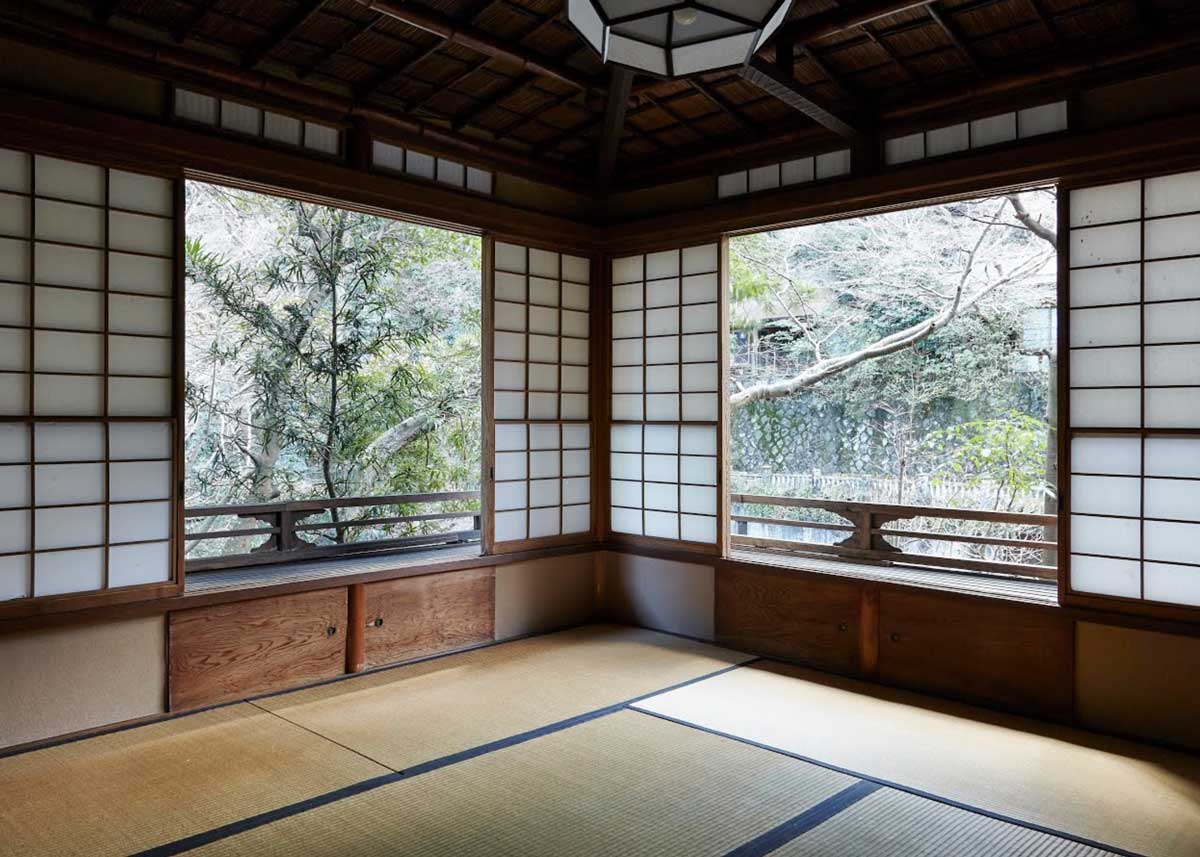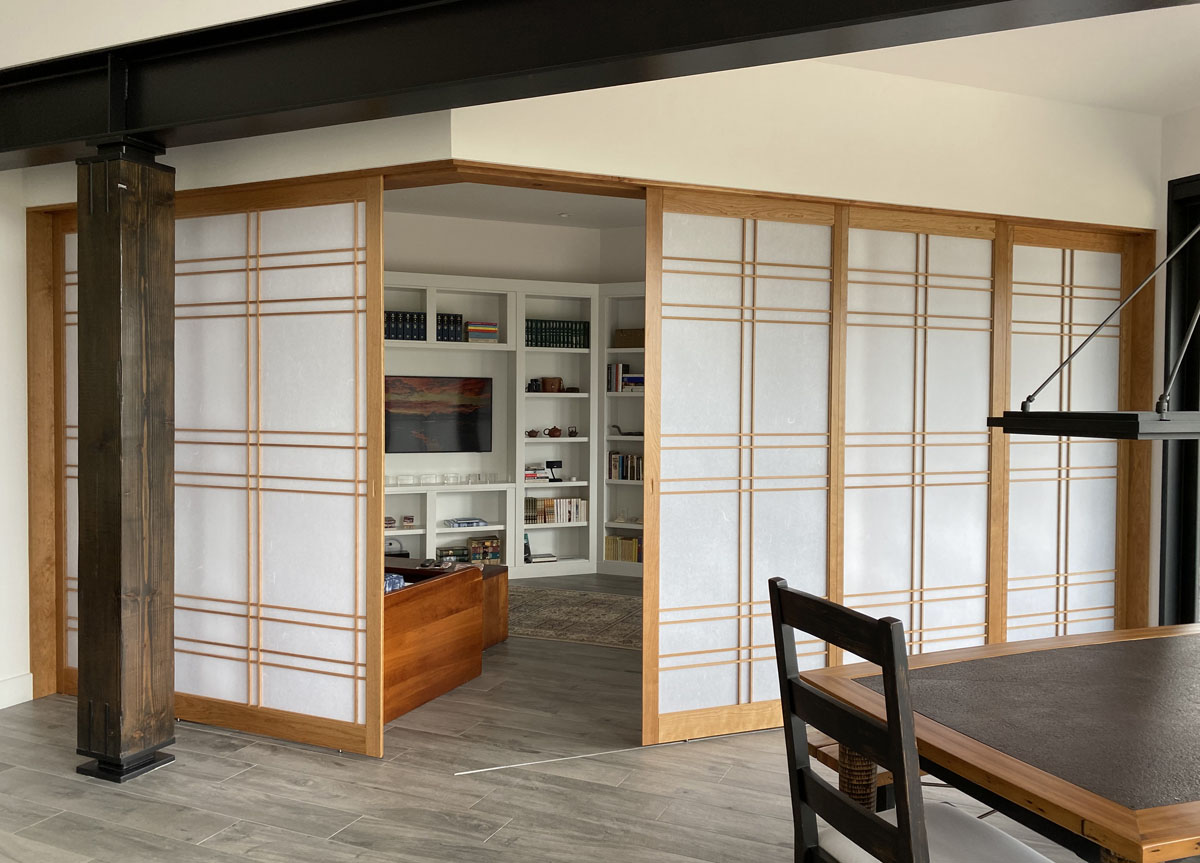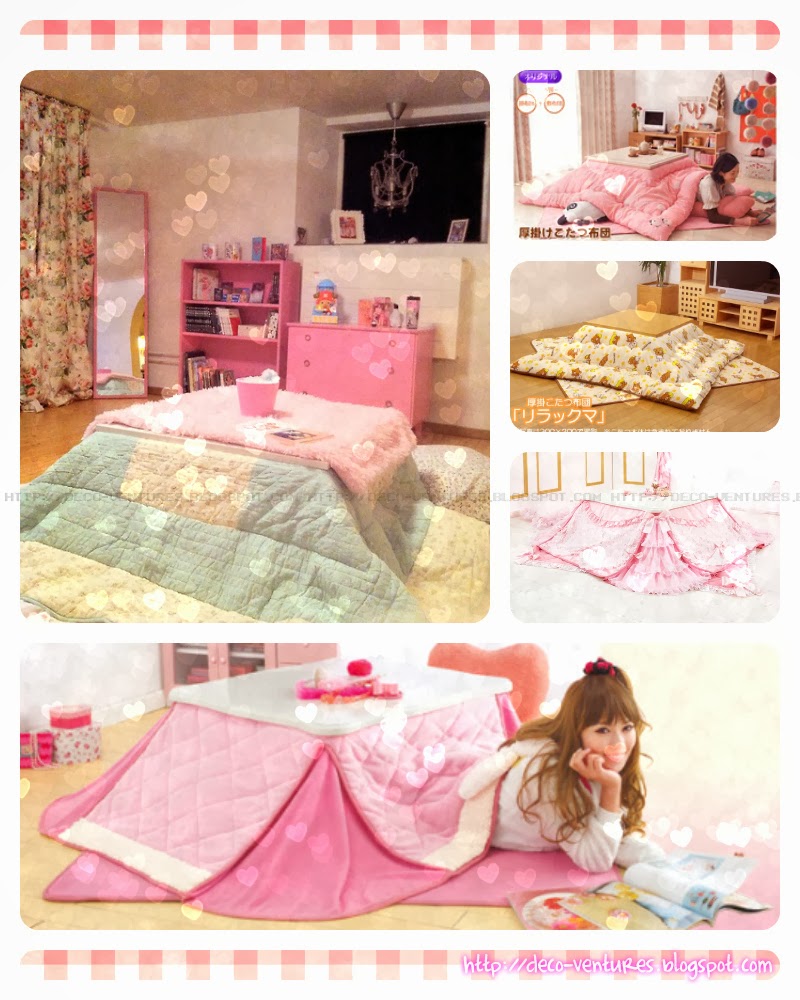In ancient Japan, the living room was considered to be the heart of the home. It was a place where families gathered to spend quality time together, share meals, and relax after a long day. The design of these living rooms was heavily influenced by the country's rich culture and traditions, resulting in some of the most beautiful and serene spaces in the world.The Timeless Beauty of Traditional Japanese Living Rooms
The Japanese tatami room, also known as washitsu, is a traditional living space that is characterized by its use of tatami mats as flooring. These mats are made of woven straw and are known for their natural, earthy scent. The tatami room is designed to promote relaxation and harmony, making it the perfect spot to unwind and disconnect from the outside world.Bringing the Serenity of a Japanese Tatami Room into Your Home
Zen is a school of Buddhism that emphasizes the importance of simplicity, mindfulness, and meditation. This philosophy is reflected in the design of a Zen living room, which is characterized by minimalism, natural materials, and a sense of tranquility. A Zen living room is the perfect place to find peace and quiet in the midst of a busy modern lifestyle.Embrace Simplicity with a Zen Living Room
Shoji screens are a signature element of Japanese design, often used as room dividers or sliding doors. These screens are made of translucent paper and wooden frames, allowing natural light to filter through and creating a soft, diffused glow in the room. A shoji screen room is a perfect blend of form and function, adding an elegant touch to any living space.Experience the Elegance of a Shoji Screen Room
Similar to shoji screens, fusuma sliding doors are also made of paper and wooden frames. However, unlike shoji screens, fusuma doors are opaque and often feature intricate hand-painted designs. They can be used to divide rooms or as a decorative element, adding a touch of traditional Japanese charm to any living room.The Versatility of Fusuma Sliding Doors
Tatami mats not only serve as a flooring option in a Japanese living room but also as a versatile piece of furniture. They can be used as a cushioned seat, a cozy spot for lounging, or even as a convenient storage space by lifting them up. These mats are an essential element of traditional Japanese living rooms and provide a comfortable and versatile seating option.Step into Comfort with Tatami Mats
The kotatsu table is a low wooden table with a heater attached to the underside. In colder months, a thick blanket is placed over the table, creating a warm and cozy space for family and friends to gather around. The kotatsu table is a staple in Japanese homes and is perfect for intimate gatherings or simply curling up with a good book.Gather Around a Kotatsu Table for Cozy Evenings
Wabi-sabi is a Japanese aesthetic philosophy that celebrates the beauty of imperfection and impermanence. This concept is reflected in the decor of a traditional Japanese living room, with a focus on natural materials, simple designs, and a sense of rustic charm. Wabi-sabi decor encourages us to appreciate the beauty in simplicity and to find joy in the present moment.Embrace Imperfections with Wabi-Sabi Decor
The irori fireplace is a traditional Japanese hearth that is used for cooking and heating. It is typically located in the center of the living room, creating a warm and inviting gathering place for family and friends. The irori fireplace is a unique and functional element of Japanese living rooms, adding a touch of warmth and tradition to the space.Warm Up with an Irori Fireplace
The futon is a type of traditional Japanese bedding that consists of a thin mattress placed on the floor. In a living room setting, futons can be used as versatile seating options, providing a comfortable and cozy spot to sit or lie down. This type of seating is perfect for smaller living spaces and adds a touch of authenticity to a Japanese living room.Relax in Comfort with Futon Seating
Ancient Japanese Living Room Concepts: A Perfect Balance of Form and Function

The Influence of Nature in Japanese House Design
 The ancient Japanese living room was a reflection of the country's strong connection to nature. This is evident in the use of natural materials such as wood, bamboo, and paper in the construction of their homes. The concept of "shinrin-yoku" or forest bathing, which promotes the idea of immersing oneself in nature for relaxation and healing, is deeply ingrained in Japanese culture and is reflected in their house design.
The living room, known as "zashiki" in Japanese, was the heart of the home and was designed to bring the outside in. Large windows and sliding doors, known as "shoji," were commonly used to allow natural light and fresh air to flow into the room. This not only created a harmonious connection with nature but also helped to regulate the temperature inside the house.
The ancient Japanese living room was a reflection of the country's strong connection to nature. This is evident in the use of natural materials such as wood, bamboo, and paper in the construction of their homes. The concept of "shinrin-yoku" or forest bathing, which promotes the idea of immersing oneself in nature for relaxation and healing, is deeply ingrained in Japanese culture and is reflected in their house design.
The living room, known as "zashiki" in Japanese, was the heart of the home and was designed to bring the outside in. Large windows and sliding doors, known as "shoji," were commonly used to allow natural light and fresh air to flow into the room. This not only created a harmonious connection with nature but also helped to regulate the temperature inside the house.
The Art of Minimalism and Functionality
 Another key aspect of ancient Japanese living room concepts is the emphasis on minimalism and functionality. The Japanese believed in the principle of "less is more," and this is reflected in their house design. Furniture was kept to a minimum, and items were carefully chosen for their practicality and beauty.
The use of "tatami" mats, made from rice straw and covered with woven rush, was a defining feature of the living room. These mats not only provided a soft and comfortable surface for sitting and sleeping but also helped to absorb moisture and regulate temperature.
Futon
mattresses were also commonly used, which could be easily stored away during the day, allowing the living room to be used for multiple purposes. This versatility and functionality were essential in the compact living spaces of ancient Japan.
Another key aspect of ancient Japanese living room concepts is the emphasis on minimalism and functionality. The Japanese believed in the principle of "less is more," and this is reflected in their house design. Furniture was kept to a minimum, and items were carefully chosen for their practicality and beauty.
The use of "tatami" mats, made from rice straw and covered with woven rush, was a defining feature of the living room. These mats not only provided a soft and comfortable surface for sitting and sleeping but also helped to absorb moisture and regulate temperature.
Futon
mattresses were also commonly used, which could be easily stored away during the day, allowing the living room to be used for multiple purposes. This versatility and functionality were essential in the compact living spaces of ancient Japan.
Harmony and Balance in Design
 In Japanese culture, balance and harmony are highly valued, and this is reflected in their house design. In the living room, furniture and decor were carefully arranged to create a sense of balance and symmetry. The use of natural materials, such as wood and paper, also added to the overall sense of harmony.
Another important aspect of Japanese house design is the incorporation of "tokonoma," a small alcove in the living room dedicated to displaying a piece of art or a seasonal decoration. This not only added a touch of beauty to the room but also served as a reminder to appreciate the present moment and the beauty of nature.
In conclusion, the ancient Japanese living room concept is a perfect balance of form and function. The strong influence of nature, the art of minimalism and functionality, and the emphasis on harmony and balance in design all come together to create a peaceful and harmonious living space. Incorporating these concepts into modern house design can help create a sense of tranquility and simplicity in our busy lives.
In Japanese culture, balance and harmony are highly valued, and this is reflected in their house design. In the living room, furniture and decor were carefully arranged to create a sense of balance and symmetry. The use of natural materials, such as wood and paper, also added to the overall sense of harmony.
Another important aspect of Japanese house design is the incorporation of "tokonoma," a small alcove in the living room dedicated to displaying a piece of art or a seasonal decoration. This not only added a touch of beauty to the room but also served as a reminder to appreciate the present moment and the beauty of nature.
In conclusion, the ancient Japanese living room concept is a perfect balance of form and function. The strong influence of nature, the art of minimalism and functionality, and the emphasis on harmony and balance in design all come together to create a peaceful and harmonious living space. Incorporating these concepts into modern house design can help create a sense of tranquility and simplicity in our busy lives.




















































































































